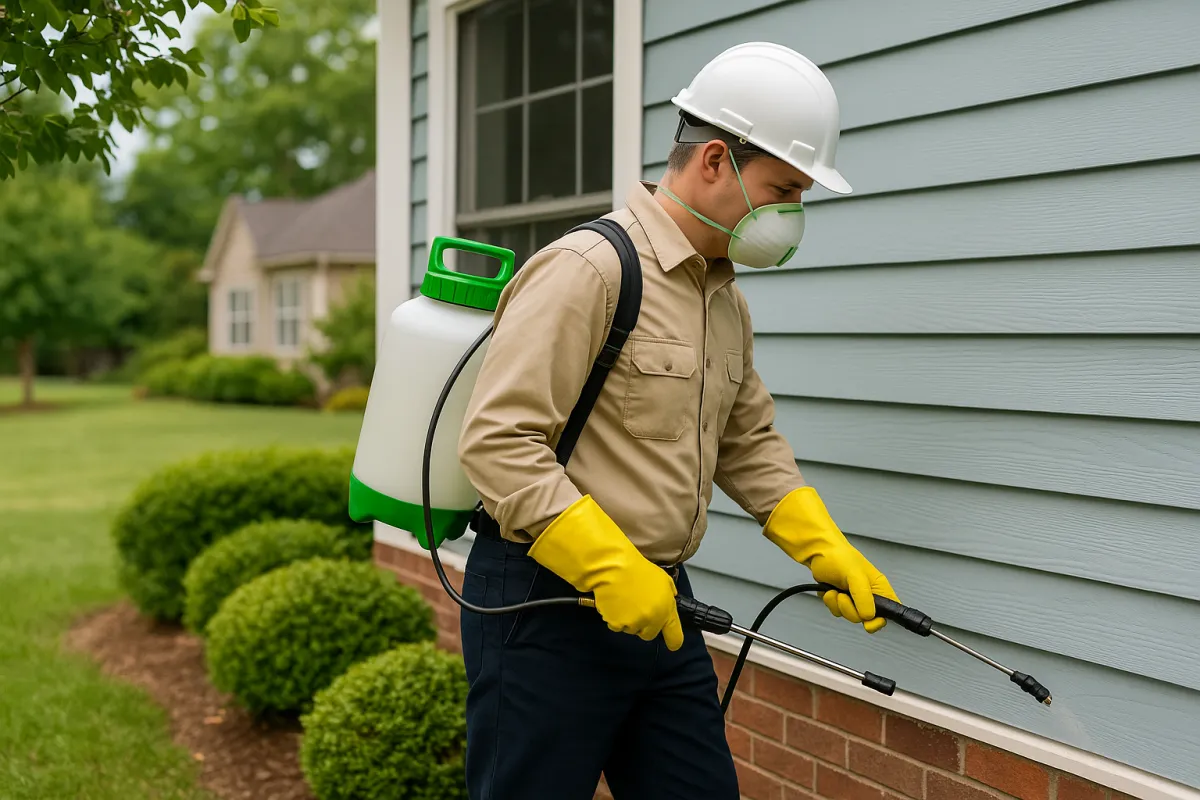
Eco-Friendly Pest Control: Smart, Safe, and Sustainable Solutions for Your Home
Eco-Friendly Pest Control: What It Is and When to Use It
Pest problems are as old as human history — but how we deal with them is evolving. Today, many homeowners are rethinking the traditional approach of “spray and kill” and turning instead to eco-friendly pest control. But what does that really mean? And when is it the right choice for your home?
This guide breaks down what eco-friendly pest control actually involves, the benefits and limitations, and when it makes the most sense to use it.
What Is Eco-Friendly Pest Control?
Eco-friendly pest control focuses on minimizing harm — not just to pests, but to your family, pets, and the planet. It’s about managing pests in a way that’s sustainable, safe, and targeted.
Unlike conventional methods that often rely heavily on synthetic chemicals, eco-friendly pest control strategies include:
Botanical or plant-based sprays
These use natural ingredients like essential oils, chrysanthemum extract (pyrethrins), or neem oil to repel or kill pests.Biological controls
Introducing natural predators (like ladybugs for aphids) to reduce pest populations.Mechanical barriers and traps
Using screens, caulking, traps, or diatomaceous earth to prevent or eliminate pests without chemicals.Cultural and environmental changes
Modifying your space (e.g., removing standing water or sealing entry points) to make it less hospitable to pests.Low-impact pesticides
When needed, these are used in very targeted ways to reduce risk to non-target species, humans, and beneficial insects.

Why Homeowners Are Making the Switch
Eco-friendly pest control isn’t just a trend — it’s part of a larger movement toward more sustainable living. Here are some of the reasons people are opting for greener pest solutions:
1. Health and Safety
Traditional pesticides can pose health risks, especially to children, pets, and individuals with respiratory issues. Eco-friendly methods reduce exposure to potentially toxic substances inside and outside the home.
2. Environmental Responsibility
Many common pesticides linger in soil and water, harming beneficial insects, birds, fish, and pollinators. Eco-friendly solutions are designed to break down more quickly or target specific pests without broad environmental fallout.
3. Resistance Prevention
Overuse of chemical treatments can lead to “superbugs” — pests that evolve resistance to common pesticides. Eco-friendly pest control typically emphasizes prevention and integrated methods, reducing the need for repeated treatments.
4. Better for Indoor Spaces
In enclosed environments like homes or offices, low-toxicity methods are a smarter long-term solution. They help maintain air quality and reduce chemical buildup on surfaces.

When to Use Eco-Friendly Pest Control
While eco-friendly pest control has many advantages, it’s not a one-size-fits-all approach. Here’s when it’s the ideal solution — and when you might need to take other action.
✅ Best Situations for Eco-Friendly Pest Control:
Mild to Moderate Infestations
If you’re dealing with a few ants, occasional spiders, or the odd fruit fly, green methods are often more than enough.
Routine Prevention
Eco-friendly pest control shines when used proactively — sealing entry points, maintaining cleanliness, and using non-toxic deterrents to keep pests from showing up in the first place.
Homes with Kids or Pets
For households with crawling toddlers or curious pets, eco-friendly options offer peace of mind.
Outdoor Spaces
Gardens, patios, and lawns benefit from natural pest management that won’t harm beneficial insects or contaminate soil and water.
Environmentally Sensitive Areas
If you live near wetlands, wildlife preserves, or water sources, eco-friendly methods may be required or strongly recommended.
When You Might Need Conventional Treatment
There are some situations where green pest control methods may not be enough on their own:
Severe infestations
Termites destroying structural wood, roaches spreading in kitchen cabinets, or a large rodent invasion may require more aggressive tactics — at least initially.Fast-acting results
If you need an immediate knock-down effect (e.g., wasps in the attic or a bedbug infestation), chemical treatments may be the most effective option.Pest-borne diseases
Some pests — like ticks or rats — pose health risks and need to be eliminated quickly and completely.
In these cases, a hybrid approach is often best: use conventional treatments to get things under control, then switch to eco-friendly maintenance methods.

What to Look for in an Eco-Friendly Pest Control Service
If you’re hiring a professional, not all “green” labels mean the same thing. Here's how to spot a truly eco-friendly provider:
Integrated Pest Management (IPM)
This is the gold standard. IPM providers combine prevention, monitoring, and targeted treatment to solve pest problems with minimal environmental impact.Licensed and trained technicians
Make sure the company is licensed in your state and their technicians are trained in eco-safe methods.Transparency
A good provider will explain exactly what products they’re using, what they contain, and why they’re necessary.Custom plans
Eco-friendly pest control isn’t “one spray fits all.” Look for companies that tailor their services to your home’s layout, your family’s needs, and the specific pest issue.
DIY Eco-Friendly Pest Tips You Can Start Today
You don’t have to wait for a service call to make your home less welcoming to pests:
Keep food sealed and crumbs cleaned up
Take out trash regularly and rinse recyclables
Fix leaks and reduce humidity indoors
Use weatherstripping and seal cracks around doors and windows
Trim vegetation that touches your home
Use natural repellents like vinegar, citrus, peppermint oil, or cedar
These small habits can drastically reduce your need for any kind of pest control in the first place.

Final Thoughts
Eco-friendly pest control is about more than being “natural” — it’s about being smart, sustainable, and strategic. It’s an excellent choice for prevention, for families concerned about chemical exposure, and for those committed to protecting the environment.
That said, it’s not always the only solution. Sometimes the best results come from combining eco-friendly methods with conventional treatments — especially for severe or dangerous infestations.
Whatever path you choose, staying informed is the first step to a safer, healthier home.